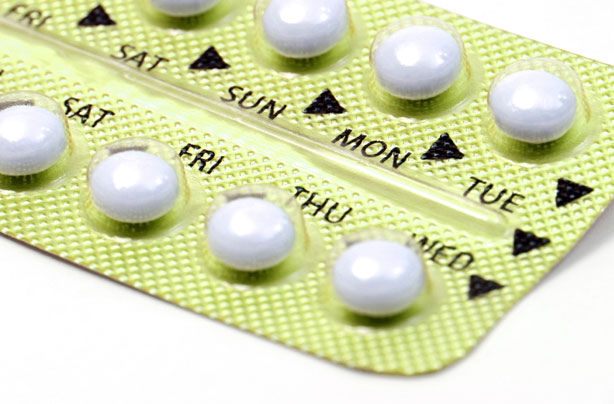The 116 things that can give you cancer
An estimated 8.2 million people died from the disease worldwide in 2012 and the number is expected to more than double until 201

There's constant speculation around things that can possibly cause cancer. A list has been released by International Agency for Research on Cancer, part of World Health Organisation, following their recent announcement that processed meats like bacon and sausages are likely to be carcinogenic. The organisation, responsible for collecting and studying data on the disease, compiled an exhaustive list of the 116 items, activities and chemicals that can contribute to cancer.
It comes as no surprise that smoking tobacco is on the list, as well as 'smokeless tobacco products', since smoking is responsible for roughly 20 per cent of cancer-related deaths and remains the number one cause of cancer.
Using sunbeds and outdoor air pollution are also on it, and while some apply only to certain professions like 'occupational exposure as a painter', other more common items can also be found like 'contraceptives, oral, sequential forms of hormonal contraception' and alcoholic beverages.
Cancer affects 2.5 million people in the UK today, according to the charity Macmillan, and is one of the leading causes of death globally. According to data released by WHO, there were an estimated 8.2 million cancer-related deaths in 2012 worldwide, and the number is expected to rise by around 70 per cent over the next two years.
Here is the World Health Organisation's list of the 116 things that can contribute to cancer
1. Tobacco smoking 2. Sunlamps and sunbeds 3. Aluminium production 4. Arsenic in drinking water 5. Auramine production 6. Boot and shoe manufacture and repair 7. Chimney sweeping 8. Coal gasification 9. Coal tar distillation 10. Coke (fuel) production 11. Furniture and cabinet making 12. Haematite mining (underground) with exposure to radon 13. Secondhand smoke 14. Iron and steel founding 15. Isopropanol manufacture (strong-acid process) 16. Magenta dye manufacturing 17. Occupational exposure as a painter 18. Paving and roofing with coal-tar pitch 19. Rubber industry 20. Occupational exposure of strong inorganic acid mists containing sulphuric acid 21. Naturally occurring mixtures of aflatoxins (produced by funghi) 22. Alcoholic beverages 23. Areca nut - often chewed with betel leaf 24. Betel quid without tobacco 25. Betel quid with tobacco 26. Coal tar pitches 27. Coal tars 28. Indoor emissions from household combustion of coal 29. Diesel exhaust 30. Mineral oils, untreated and mildly treated 31. Phenacetin, a pain and fever reducing drug 32. Plants containing aristolochic acid (used in Chinese herbal medicine) 33. Polychlorinated biphenyls (PCBs) - widely used in electrical equipment in the past, banned in many countries in the 1970s 34. Chinese-style salted fish 35. Shale oils 36. Soots 37. Smokeless tobacco products 38. Wood dust 39. Processed meat 40. Acetaldehyde 41. 4-Aminobiphenyl 42. Aristolochic acids and plants containing them 43. Asbestos 44. Arsenic and arsenic compounds 45. Azathioprine 46. Benzene 47. Benzidine 48. Benzo[a]pyrene 49. Beryllium and beryllium compounds 50. Chlornapazine (N,N-Bis(2-chloroethyl)-2-naphthylamine) 51. Bis(chloromethyl)ether 52. Chloromethyl methyl ether 53. 1,3-Butadiene 54. 1,4-Butanediol dimethanesulfonate (Busulphan, Myleran) 55. Cadmium and cadmium compounds 56. Chlorambucil 57. Methyl-CCNU (1-(2-Chloroethyl)-3-(4-methylcyclohexyl)-1-nitrosourea; Semustine) 58. Chromium(VI) compounds 59. Ciclosporin 60. Contraceptives, hormonal, combined forms (those containing both oestrogen and a progestogen) 61. Contraceptives, oral, sequential forms of hormonal contraception (a period of oestrogen-only followed by a period of both oestrogen and a progestogen) 62. Cyclophosphamide 63. Diethylstilboestrol 64. Dyes metabolized to benzidine 65. Epstein-Barr virus 66. Oestrogens, nonsteroidal 67. Oestrogens, steroidal 68. Oestrogen therapy, postmenopausal 69. Ethanol in alcoholic beverages 70. Erionite 71. Ethylene oxide 72. Etoposide alone and in combination with cisplatin and bleomycin 73. Formaldehyde 74. Gallium arsenide 75. Helicobacter pylori (infection with) 76. Hepatitis B virus (chronic infection with) 77. Hepatitis C virus (chronic infection with) 78. Herbal remedies containing plant species of the genus Aristolochia 79. Human immunodeficiency virus type 1 (infection with) 80. Human papillomavirus type 16, 18, 31, 33, 35, 39, 45, 51, 52, 56, 58, 59 and 66 81. Human T-cell lymphotropic virus type-I 82. Melphalan 83. Methoxsalen (8-Methoxypsoralen) plus ultraviolet A-radiation 84. 4,4'-methylene-bis(2-chloroaniline) (MOCA) 85. MOPP and other combined chemotherapy including alkylating agents 86. Mustard gas (sulphur mustard) 87. 2-Naphthylamine 88. Neutron radiation 89. Nickel compounds 90. 4-(N-Nitrosomethylamino)-1-(3-pyridyl)-1-butanone (NNK) 91. N-Nitrosonornicotine (NNN) 92. Opisthorchis viverrini (infection with) 93. Outdoor air pollution 94. Particulate matter in outdoor air pollution 95. Phosphorus-32, as phosphate 96. Plutonium-239 and its decay products (may contain plutonium-240 and other isotopes), as aerosols 97. Radioiodines, short-lived isotopes, including iodine-131, from atomic reactor accidents and nuclear weapons detonation (exposure during childhood) 98. Radionuclides, α-particle-emitting, internally deposited 99. Radionuclides, β-particle-emitting, internally deposited 100. Radium-224 and its decay products 101. Radium-226 and its decay products 102. Radium-228 and its decay products 103. Radon-222 and its decay products 104. Schistosoma haematobium (infection with) 105. Silica, crystalline (inhaled in the form of quartz or cristobalite from occupational sources) 106. Solar radiation 107. Talc containing asbestiform fibres 108. Tamoxifen 109. 2,3,7,8-tetrachlorodibenzo-para-dioxin 110. Thiotepa (1,1’,1”-phosphinothioylidynetrisaziridine) 111. Thorium-232 and its decay products, administered intravenously as a colloidal dispersion of thorium-232 dioxide 112. Treosulfan 113. Ortho-toluidine 114. Vinyl chloride 115. Ultraviolet radiation 116. X-radiation and gamma radiation
You can find out more information via the World Health Organisation here.
GoodtoKnow Newsletter
Parenting advice, hot topics, best buys and family finance tips delivered straight to your inbox.
Trusted, informative, and empathetic – GoodToKnow is the ultimate online destination for parents. At GoodtoKnow, our mission is 'simple': we're trying to make sense of parenthood. On the site, you'll find everything you need for a happy, healthy family life. Our huge archive of content includes more than 18,000 articles and 1,500 how-to videos. These include expert-backed advice features on parenting, dealing with relationship changes after having a baby, self-care for mums and managing your family finances. We also feature tried-and-tested product reviews and buying recommendations for every stage of family life - from prams and Moses baskets to birthday gifts and top toys.